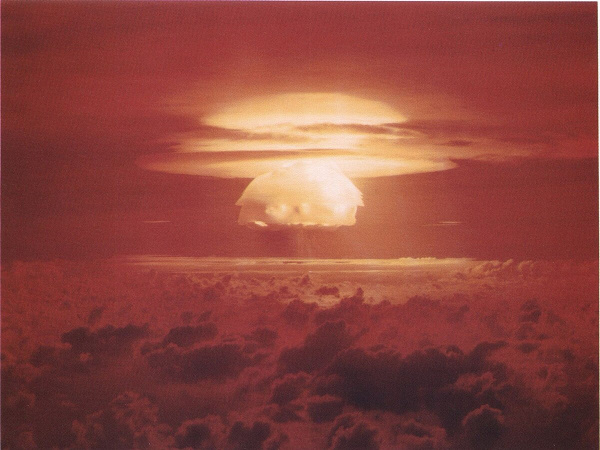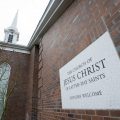Question
Gramps,
Elder Bruce R. McConkie stated that atomic holocausts surely must come. What does the Book of Mormon have to say about that? What has to happen before the earth is “cleansed”?
Andrew
Answer
Andrew,
In a world increasingly fraught with turmoil and uncertainty, the prophecies of Elder Bruce R. McConkie regarding atomic holocausts serve as a poignant reminder of the challenges that lie ahead. He asserted that such catastrophic events “surely must come” as part of the prophesied turmoil in the last days.
The future of humanity is often depicted through various lenses—scientific, philosophical, and spiritual. For members of The Church of Jesus Christ of Latter-day Saints, the Church’s teachings provide a framework for understanding the prophetic warnings surrounding the last days. Elder McConkie’s assertions regarding atomic destruction resonate deeply with the Book of Mormon’s emphasis on cleansing through divine intervention. So what does that mean for us today?
Elder Bruce R. McConkie’s reflections on atomic holocausts are poignantly captured in his writings, where he underscores the catastrophic potential of modern warfare and its relationship to biblical prophecy. He stated, “The time will come when the earth will be cleansed by fire, and the wicked will be burned as stubble” (Doctrine of the Kingdom, p. 375). This assertion aligns with several passages in the Book of Mormon, which prophesy various forms of destruction as a consequence of wickedness.
In Mormon 9:4, Moroni warns,
Ye would be more miserable to dwell with a holy and just God, under a consciousness of your filthiness before him, than ye would to dwell with the damned souls in hell.
This suggests that the presence of God is purifying and that those unprepared for such a presence will face dire consequences.
Furthermore, 1 Nephi 22:15 prophesies a time when “all the proud and they who do wickedly shall be as stubble,” indicating that the last days will indeed witness the consequences of moral decay. The imagery of destruction is not simply a warning; it serves as a call to repentance and a reminder of the need for righteousness.
The Book of Mormon is replete with narratives and teachings emphasizing the need for cleansing and redemption. Significant passages illustrate the consequences of wickedness and the ultimate necessity for divine intervention.
In Ether 4:9, it is stated,
At my command… the earth shall shake; and at my command the inhabitants thereof shall pass away, even so as by fire.
This verse indicates that destruction is part of a divine plan, highlighting selective destruction rather than total annihilation. It reinforces the belief that while destruction may come, those who remain faithful will be preserved.
The theme of purification reappears in Alma 9-16, where cities are destroyed due to the wickedness of their inhabitants. This narrative serves as a stark reminder of the consequences of turning away from God and the need to seek His guidance.
Central to the teachings of the Book of Mormon is the balance of divine justice and mercy. While destruction will come as a consequence of wickedness, God’s mercy ensures that the righteous will be preserved. In 2 Nephi 6:14, we read,
And there shall be none to deliver them, but the Lord God of Israel shall be the one to deliver his people.
This passage emphasizes the Church’s belief in a loving God who, even amidst destruction, provides a way for the faithful to be saved.
Hugh Nibley, in his writings, commented on the relevance of the Book of Mormon to contemporary issues, noting,
“The Book of Mormon speaks of the great overburn, not the final destruction of the earth by fire, but a great man-made holocaust from which some shall be saved to make a better world” (Collected Works of Hugh Nibley, Vol. 6).
This perspective encourages believers to view the prophesied destruction not just as an end, but as a precursor to renewal and redemption.
The teachings of Elder McConkie and the Book of Mormon collectively point to the significance of preparation for the Second Coming of Jesus Christ. Latter-day Saints believe that these events serve as a precursor to Christ’s return, where righteousness will ultimately prevail. As stated in Doctrine and Covenants 87:6,
And thus, saith the Lord: I will pour out my fury upon the inhabitants of the earth, and I will send forth my angels to gather my elect from the four quarters of the earth.
This prophetic warning highlights the urgency for individuals and nations to turn away from wickedness and seek the path of righteousness. As the scriptures affirm, “For behold, the sword of vengeance hangeth over you; and the time soon cometh that he avengeth the blood of the saints upon you” (Mormon 8:41), urging all to seek righteousness in a world fraught with peril.
Elder McConkie’s insights and the teachings found in the Book of Mormon converge on the critical theme of cleansing, highlighting the urgency for individuals and nations to turn away from wickedness and seek the path of righteousness in anticipation of the Lord’s return. The prophetic warnings of destruction serve not only as a cautionary tale but also as an invitation to repentance and a deeper relationship with God.
As we navigate the complexities of our modern world, may we heed these teachings and strive to live lives that reflect our commitment to righteousness, compassion, and faith. In doing so, we can find hope amidst uncertainty and prepare ourselves for the blessings that await those who are faithful.
Gramps







